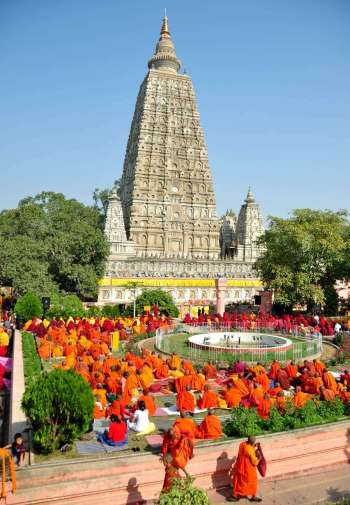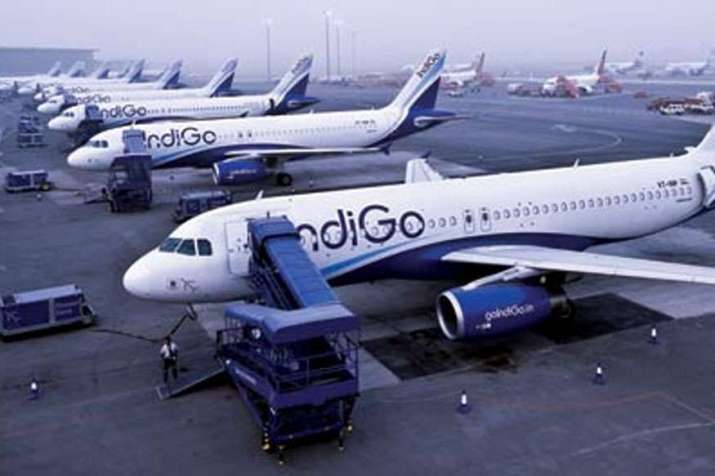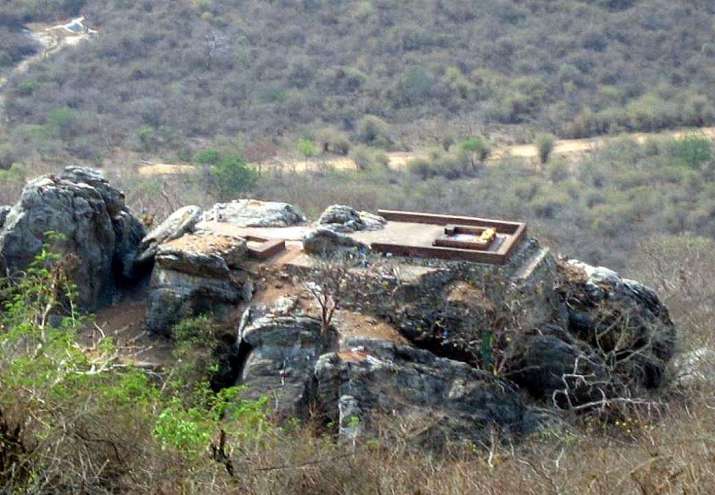Indian budget airline IndiGo announced last week that they plan 12 new daily flights to the Buddhist pilgrimage cities of Gaya, Patna, and Varanasi. The flights, which can be booked now, are scheduled to begin 8 August from Kolkata and between these cities. The promotion is aimed at attracting Buddhist pilgrims from East and Southeast Asia, as IndiGo currently serves Hong Kong, Sri Lanka, and Thailand, and is planning new routes from Vietnam and Chengdu, China, to Kolkata in coming months.
Each city is near one of the four major Buddhist pilgrimage sites. Gaya is just a few miles north of Bodh Gaya, the site of the Buddha’s awakening. Patna, which is called Pataliputta in the Buddhist Pali Canon, is near Vulture Peak, a key site of many of the Buddha’s teachings as well as Vaishali, the site where the Buddha gave his final teaching. Lastly, Varanasi is to the south of Sarnath, the site of Deer Park, where the Buddha is said to have given his first teaching.
The Buddhist circuit is a route that allows pilgrims to follow in the footsteps of the Buddha. According to Buddhist scholar Kevin Trainor, pilgrimage “has played a formative role in the history of Buddhism” (Buzwell 2004, 651). Pilgrimage sites beyond those associated with the Buddha’s life have been established throughout Buddhism’s 2,500 year history and global expanse, although none hold the broad significance of the sites where the Buddha lived and taught. The Mahabodhi Temple in Bodh Gaya is the most central of these with an estimated 4 million visitors annually, and was designated as a UNESCO World Heritage Site in 2002.
 Mahabodhi Stupa, Bodh Gaya. From patheos.com
Mahabodhi Stupa, Bodh Gaya. From patheos.comLast year, the Indian tourism ministry launched an ambitious initiative, with the help of funding from the World Bank and the government of Japan, aimed at developing tourism along the Buddhist circuit.
“We have put in quite a bit of money already, but we are also in touch with the World Bank as well as the Japanese government to see if we could have some big money coming in so that we can create the necessary infrastructure here,” said tourism minister KJ Alphons. “Talks are still at the preliminary stage. If they give us money, subject to approvals from the finance ministry, I will take it up. It will be a few billion dollars as we want to create world-class infrastructure.” (The Economic Times)
Pilgrims currently have a range of options for visiting important Buddhist sites in India, including bus, hired car, and train. Last year, Indian Railway Catering and Tourism Corporation launched a luxury, eight-city train tour of Buddhist sites in India and Nepal as well as Agra, home of the Taj Mahal.
India is a predominantly Hindu nation, with 80 per cent of its citizens adhering to that religion according to its latest census.* Muslims make up the second-largest religion, at 13 per cent, followed by Christians at 2.3 per cent, and Sikhs at 1.9 per cent, with Buddhists representing just 0.8 per cent. Despite its small size, Buddhism has played an important role in recent Indian history, with resurgences from both conversions within the country’s Dalit population, led by Dr. B. R. Ambedkar, and an influx of refugees from Tibet, most notably His Holiness the Dalai Lama.
* Office of the Registrar General & Census Commissioner, India
See more
Government eyes funds from World Bank, Japan to develop & Promote Buddhism Circuit (The Economic Times)
IndiGo to Launch Flights on Buddhist Circuit; To Connect Kolkata, Varanasi, Gaya (News 18)
Related news from Buddhistdoor Global
Indian PM Invokes the Buddha in Contentious Elections
Buddha Head Found amid New Excavation Efforts in Gujarat, India
Karmapa Says No Action from India on Pending Visa Application
Anniversary of B. R. Ambedkar's Death Prompts Marches and Reflection
Conference in Nagpur Explores Ambedkarite Buddhism and Chinese Buddhist Diplomacy
Related features from Buddhistdoor Global
Buddhism as Service: Ayya Yeshe
Buddhism and India – The Child Returns Home . . . ?
An Ambedkarite Buddhist Today
Buddhism as a Bridge between India and the World: An Interview with Prof. Shashi Bala, Part One

















